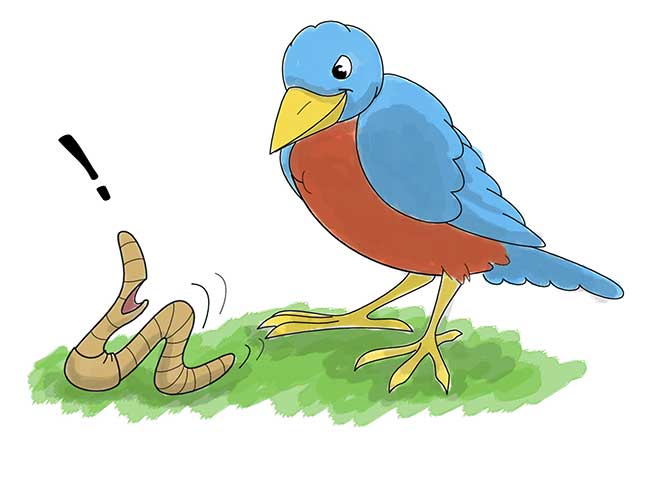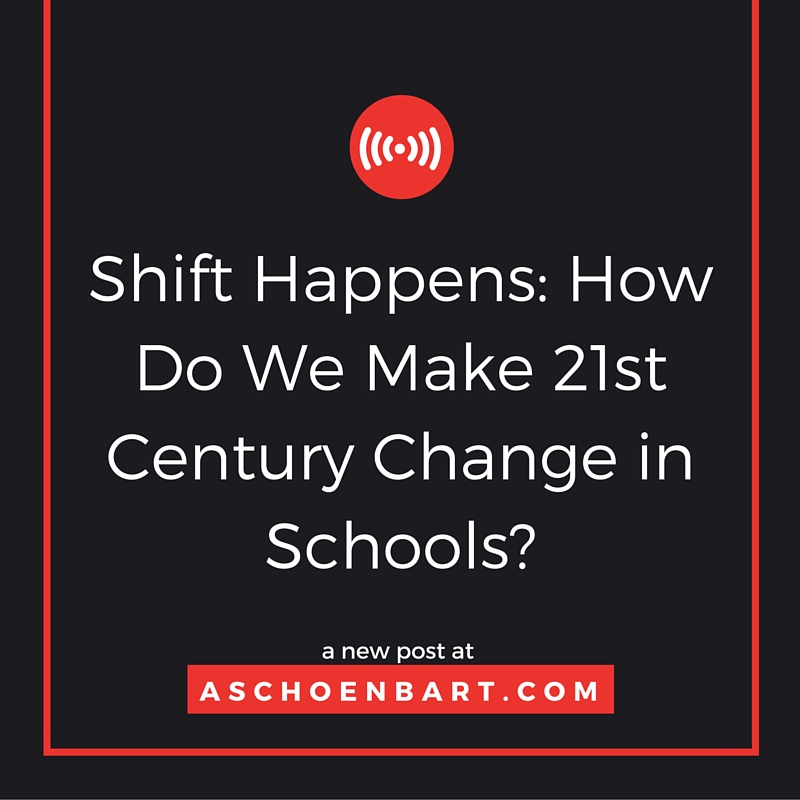Shift Happens: How Do We Make 21st Century Change in Schools?


This year is my first as a technology coach in my school. So far, I’ve really enjoyed it. I’ve been able to help plan and facilitate professional development for a large staff and to have a hand in shaping the plan and vision for technology integration. I also spend half of my day teaching 10th grade English, so I’m able to tie my coaching and PD into my own classroom instruction. So far, so good--I thought. And then came the words that have been playing back in my head for a day now.
While discussing a plan for future technology PD, my friend Tina reminded me: “There’s more to instructional technology than tools.” Duh. I know that. If you’re reading this, you likely know it, too. But she was totally right--for whatever reason we weren’t talking about that. We were focusing on tools, resources, and sometimes skills, not shifts, pedagogy, or transformative learning. If I want to be a catalyst for change so badly, why weren’t these the conversations we were having? Why wasn’t I contributing to the bigger picture?
Maybe (and probably--I hope), I’m being hard on myself. I’m generally happy with the impact I’ve had so far. Teachers in my department are using technology meaningfully, purposefully, and regularly like never before, and I see change happening right now. But in planning the big picture, these ideas have been fairly absent. In August, I wrote a post titled5 Big Shifts for My Classroom in 2015, explaining how I wanted to focus on student-centered learning, creation, connected learning, communication, and communities of learners. And in my classroom, I think I’ve had success. Now I need to apply the same goals to the big picture; 21st century shifts in my classroom are great but only affect my students. Shifts in teachers’ mindsets and practice have an exponential impact.
Change is hard. And it’s scary. Maybe I subconsciously shied away from what I know I know so well: change is uncomfortable but necessary. Good leaders help lead transformational change with buy in and payoff. Sometimes, that buy in will come from a tool that can save a teacher time or make their online work more effective. But that won’t prepare our teachers or students for tomorrow on its own.
Questions & Answers
I don’t really have any answers here, but I think I have some of the questions:
- What are the most important shifts in 21st century teaching and learning?
- How should professional learning, development, and coaching shift to help facilitate these changes?
- What concrete strategies can coaches and leaders use to help facilitate these changes?
Without answers, all I can do is start small, and focus on the objective. I want to promote student-centered classrooms, with the purposeful integration of technology and active learning and creation. I want teachers to put their trust in students as self-directed learners, leaders, and creators, and to step back and facilitate their progress. Lastly, I want to see teachers and students communicate and collaborate because all of us are smarter than one of us.
As I thought about these ideas and concepts, I started to do my homework. Below, find a handful of articles that I read today that shed light on these ideas. Over the next few weeks, I plan to continue to develop these ideas and would love for you to add to the conversation.
Tools and ideas to transform education. Sign up below.
Ken Robinson’s “Changing Educational Paradigms”
- It's Time to Restructure Teacher Professional Development by Mike Schmoker
- 5 Ways to Make Your Classroom Student-Centered by Marcia Powell
- The Student-Centered Classroom: Communicating What Matters by Pernille Ripp
- Becoming a 21st Century School or District: Use the 4Cs to Build Professional Capacity by Ken Kay
- Student-Centered Learning: It Starts With the Teacher by John McCarthy
- Why the Factory Model of Schools Persists, and How We Can Change It by William J Tolley
cross posted at www.aschoenbart.com
Adam Schoenbart is a high school English teacher, Google Education Trainer, and EdD candidate in Educational Leadership. He teaches grades 10-12 in a 1:1 Chromebook classroom at Ossining High School in Westchester County, NY and received the 2014 LHRIC Teacher Pioneer Award for innovative uses of technology that change teaching and learning. Read more at The SchoenBlog and connect on Twitter @MrSchoenbart.
